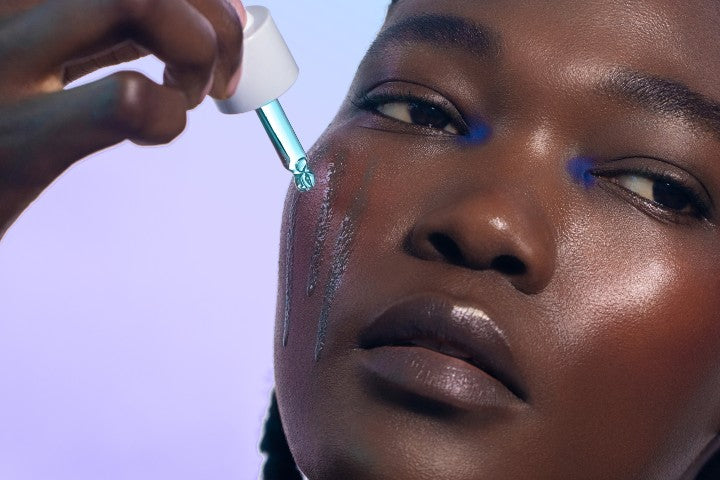5 of the Best Fungal Acne Treatments

Fungal acne is a common skin condition that isn’t actually acne at all. It's pityrosporum folliculitis (malassezia folliculitis), which is inflammation of the hair follicles caused by an overgrowth of superficial yeast. Fungal acne usually appears as red itchy bumps that may also look like blackheads or whiteheads. It can show up almost anywhere — the face, check, back, upper arms, and even the butt.
According to dermatologists, it can be caused by everything from heat and humidity to tight, sweaty clothing to overuse of antibiotics.
Wondering what you can do to get rid of fungal acne? Here are five of the best fungal acne treatments you can try today to get clear.
#1: Use an Antifungal Shampoo
Antifungal shampoos, or anti-dandruff shampoos can be extremely effective when it comes to clearing up fungal acne. They contain an active ingredient called zinc pyrithione, which is antifungal. Apply it to the affected area, let it sit on the skin for a couple of minutes, and rinse with cool water.
“I typically recommend using an anti-dandruff shampoo in the shower daily when the bumps are active and weekly once it's gone to keep it gone,“ says Kaveri Karhade, a board-certified cosmetic and medical dermatologist. “It works better if you apply it to the affected area and leave it on for a few minutes before rinsing it off.”
You can try Head & Shoulders Classic Clean Daily Shampoo or any other dandruff-fighting shampoo — as long as it contains fungal-fighting ingredients like zinc pyrithione or selenium sulfide. For best results, make it part of your daily skincare routine.
#2: Wash with a Salicylic Acid-Based Cleanser
Exfoliation can help buff away dead skin cells, excess oil, and dirt — all of which might contribute to the increase of yeast overgrowth. Opt for a chemical exfoliant like salicylic acid (BHA) to reduce the chance of getting fungal acne.
Salicylic acid works by swiping away dead skin cells, sebum, and impurities to unclog pores, prevent breakouts, and minimize fungal acne breakouts. This BHA is commonly used to treat regular acne, but it can be just as effective at treating malassezia (pityrosporum) folliculitis.
For best results, look for a toner, cleanser, or body wash infused with salicylic acid and use it in your daily routine to unclog pores and ward off fungal acne pimples.
#3: Try Tea Tree Oil
Packed with antiseptic and antifungal properties, tea tree oil is a great topical treatment for fungal acne. You can either choose skincare products that contain high concentrations of tea tree oil, or dilute two drops of it with 12 drops of a carrier oil and apply to affected areas. If you have sensitive skin, use with care, as it may be irritating to those with delicate skin.
To be on the safe side, opt for a toner, cleanser, or moisturizer made with tea tree to fight the fungal infection on your skin.
#4: Moisturize with a Lightweight Formula
Hydration is still important even if you have fungal acne pustules and papules. Avoid thick, heavy lotions and creams, and use lightweight versions instead to replenish moisture without clogging pores. Even if you have oily skin, you should still be moisturizing on a daily basis to keep skin nourished and healthy.
One of our favorite lightweight moisturizers is Rainbow’s Hydrate Serum. It’s made with hyaluronic acid and vitamin B5 to drench skin in long-lasting moisture while leaving your face and body looking extra dewy. Best of all, it’s gentle on all skin types, making it the perfect option as a daily moisturizer that won’t congest pores and worsen fungal acne.
#5: Opt for Prescription Oral Medication
If over-the-counter treatments don’t work on your fungal acne, visit a dermatologist for professional advice. They may subscribe you antifungal medication to clear up your skin.
“Ciclopirox and Ketoconazole are two prescription medications that you can applying topically to treat fungal acne,” says Dr. Dendy Engelman, a celebrity dermatologist and board certified dermatologic surgeon.
In some cases, you may be prescribed an oral antifungal treatment like Fluconazole (usually prescribed for a vaginal yeast infection). Alternatively, they may give you Clotrimazole cream (Mycelex).
HOW TO STAY FUNGAL ACNE FREE
If you’ve finally cleared up your fungal acne, make sure it stays that way by following these preventative tips.
- Wear an oil-free sunscreen every day to keep skin healthy and protected from harmful UV rays. Re-apply every two hours for maximum protection.
- Stick to using fungal acne safe products in your daily skincare routine to avoid worsening your condition — or triggering it.
- Boost your immune system by consuming nutrient-rich foods.
- Wear loose, breathable clothing to prevent sweat from getting trapped and triggering fungal acne comedones and bumps.
- “Choose loose clothing with natural fabrics, avoid spandex, and change clothing often after exercise or excessive sweating. This can be helpful particularly in hot weather when it can flare up.” explains board-certified dermatologist Ava Shamban, MD.
- Incorporate acne-fighting skincare ingredients in your routine, such as salicylic acid + benzoyl peroxide. Coconut oil also contains antifungal properties that can help clear up fungal acne lesions.
- Consult your dermatologist about fungal acne medications and discuss the side effects before going ahead.
Fungal acne is a frustrating skin concern that affects more people than you think. Heat, sweating, and antibiotics can all be to blame for causing fungal acne. You can certainly prevent the onset by staying cool, wearing breathable clothing, washing straight after workouts, and taking a break from antibiotics.
If you’re unsure whether you’re dealing with bacterial acne or fungal acne, speak to a dermatologist or healthcare provider for advice. Whenever you are concerned about your skin, always consult a dermatologist. They should be able to provide some insight to give you peace of mind — or at least, a treatment for any potential skin concerns or conditions.
